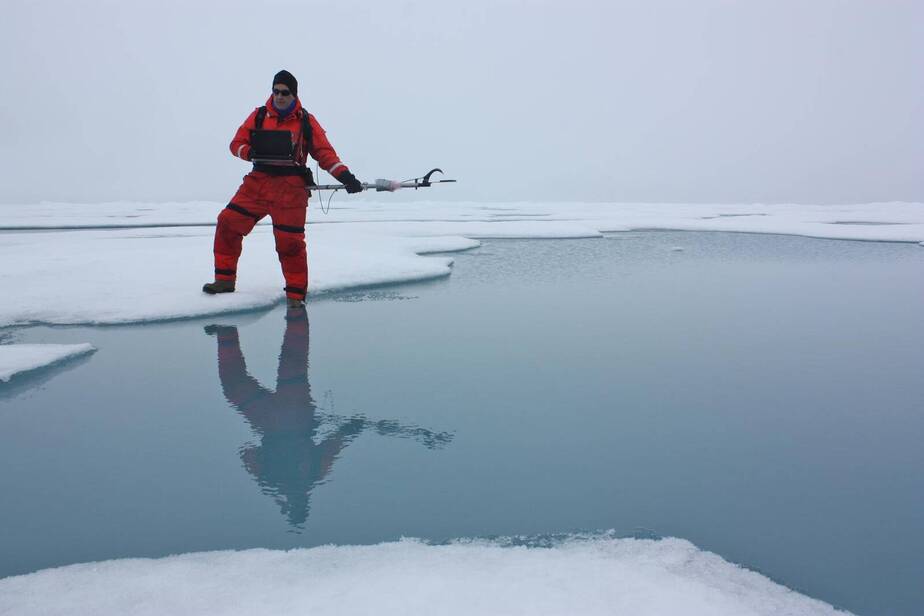SOURCE: Inside Climate News
DATE: August 11, 2020
SNIP: The thickening atmospheric stew of greenhouse gases is punching holes in Arctic sea ice, leading it to crumble at a rapidly increasing rate. Last spring, ponds of meltwater on the ice sped the melting of the glossy shield that reflects incoming heat from the sun back to space. By July, the ice had dwindled to a record low extent for that month.
It could disappear as soon as 2035, scientists said this week, as they released a study showing how the formation of melt ponds on the surface of the sea ice drove it to completely melt away about 130,000 years ago in an era called the Last Interglacial—probably the last time the Arctic Ocean was ice-free during summer.
Observations show melt ponds forming earlier and persisting longer. Their blue water is darker than the white ice surrounding them, so they absorb more warmth from the sun. That heat seeps through the sides of the pond to melt more ice, and even oozes down to warm the ocean beneath it. Instead of a solid reflective mirror, the surface is increasingly pitted, scarred and cracked until, at its edges, it dissolves into the sea like an ice cube melting on a hot sidewalk.
The imminent disappearance of Arctic sea ice has also raised concerns about the potential for international conflicts over the oil and gas deposits beneath the floors of Arctic seas, as well as over prized commercial fish stocks that have moved or are easier to reach due to the diminishing ice.
The loss of sea ice buffers is probably also speeding up the melting of land-based ice sheets and glaciers that flow into the ocean. Although it remains to be proven by researchers, it appears that this year’s sharp sea ice decline may have contributed to the collapse of Canada’s last ice shelf. And in a tweet this week, University of Liege climate scientist Xavier Fettweis attributed record runoff from the Franz Josef Ice Caps in the Russian Arctic to the collapse of Arctic sea ice.
“Usually, these ice caps have been protected by sea ice,” he said. The sea ice cools the air above it, maintaining freezing temperatures in the atmosphere above the ice caps. “This summer, the absence of sea ice allowed near-surface temperatures (around the Franz Josef Ice Caps) to be largely above 0°C (32 Fahrenheit),” he said. “Temperatures of 2-3°C (3.6 to 5.4 degrees Fahrenheit) above the freezing points were never reached over these ice caps until now.”

